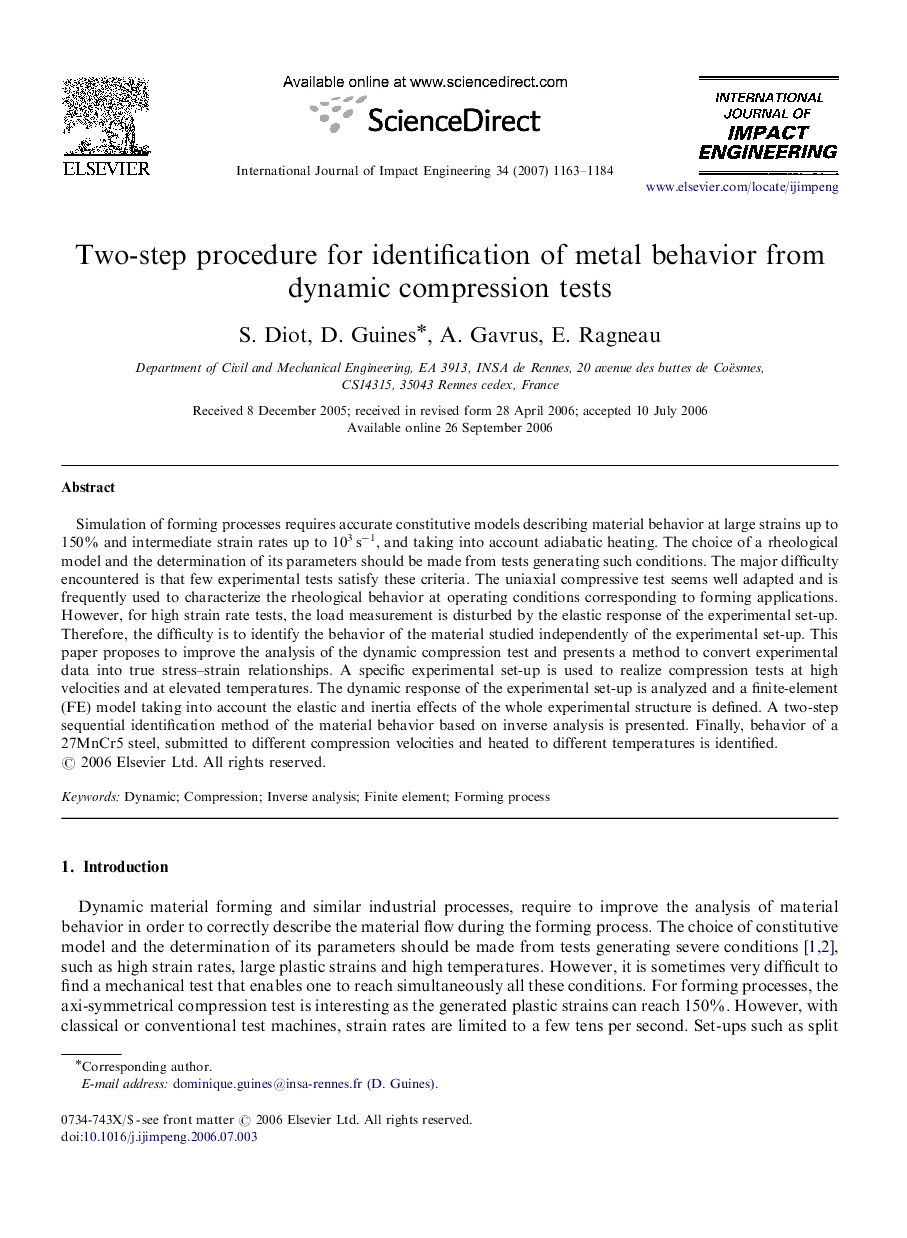| کد مقاله | کد نشریه | سال انتشار | مقاله انگلیسی | نسخه تمام متن |
|---|---|---|---|---|
| 783681 | 1464162 | 2007 | 22 صفحه PDF | دانلود رایگان |

Simulation of forming processes requires accurate constitutive models describing material behavior at large strains up to 150% and intermediate strain rates up to 103 s−1, and taking into account adiabatic heating. The choice of a rheological model and the determination of its parameters should be made from tests generating such conditions. The major difficulty encountered is that few experimental tests satisfy these criteria. The uniaxial compressive test seems well adapted and is frequently used to characterize the rheological behavior at operating conditions corresponding to forming applications. However, for high strain rate tests, the load measurement is disturbed by the elastic response of the experimental set-up. Therefore, the difficulty is to identify the behavior of the material studied independently of the experimental set-up. This paper proposes to improve the analysis of the dynamic compression test and presents a method to convert experimental data into true stress–strain relationships. A specific experimental set-up is used to realize compression tests at high velocities and at elevated temperatures. The dynamic response of the experimental set-up is analyzed and a finite-element (FE) model taking into account the elastic and inertia effects of the whole experimental structure is defined. A two-step sequential identification method of the material behavior based on inverse analysis is presented. Finally, behavior of a 27MnCr5 steel, submitted to different compression velocities and heated to different temperatures is identified.
Journal: International Journal of Impact Engineering - Volume 34, Issue 7, July 2007, Pages 1163–1184